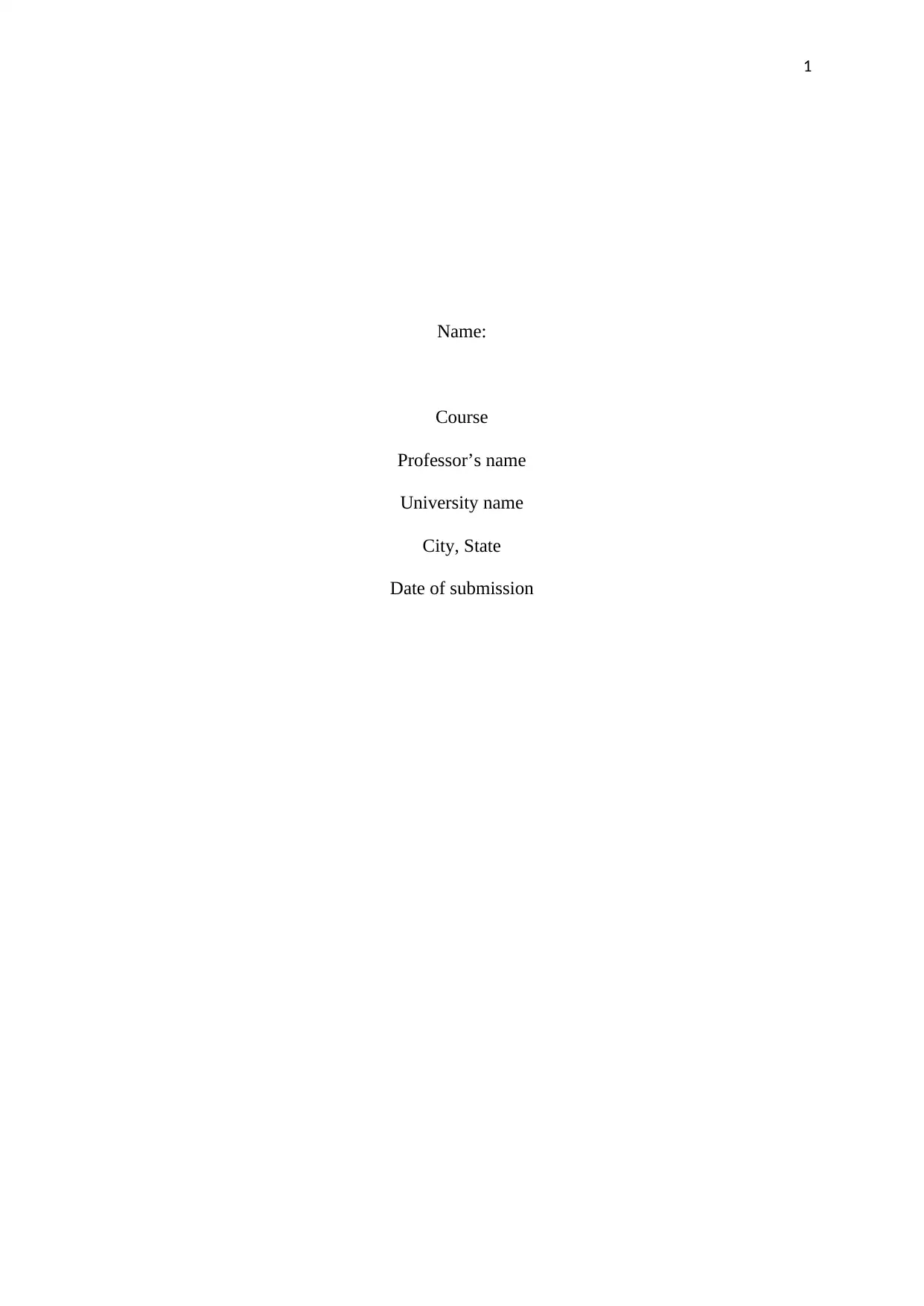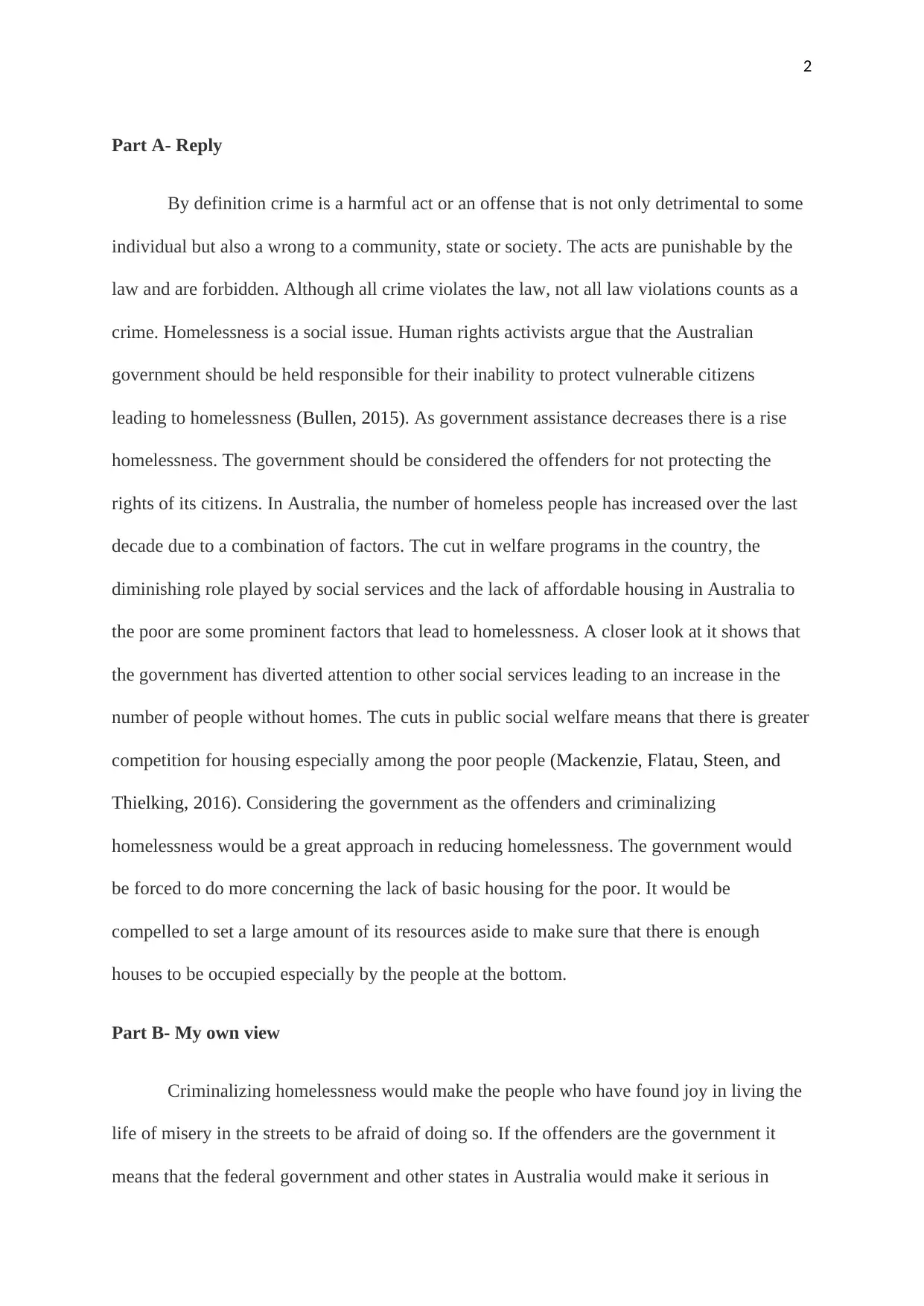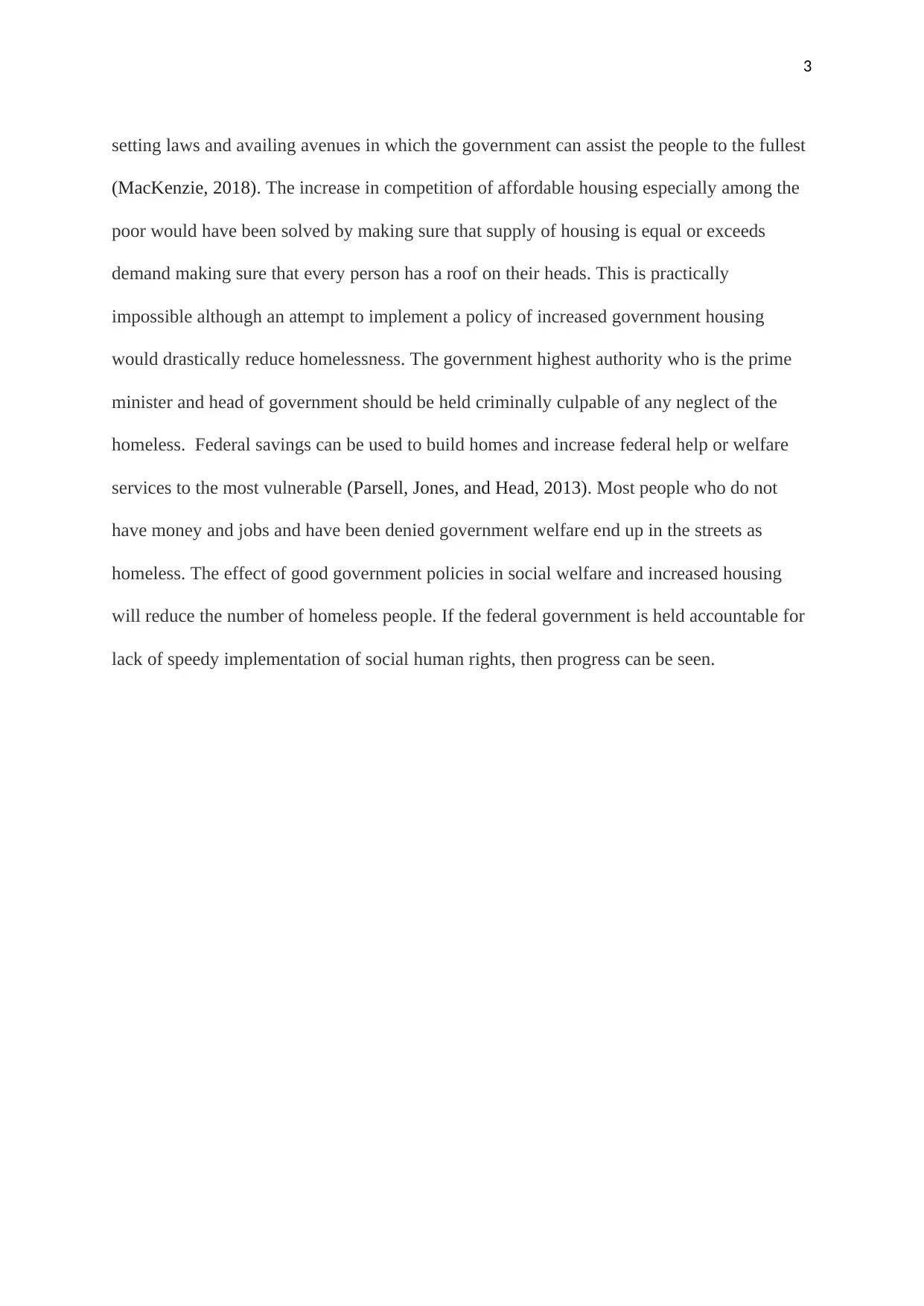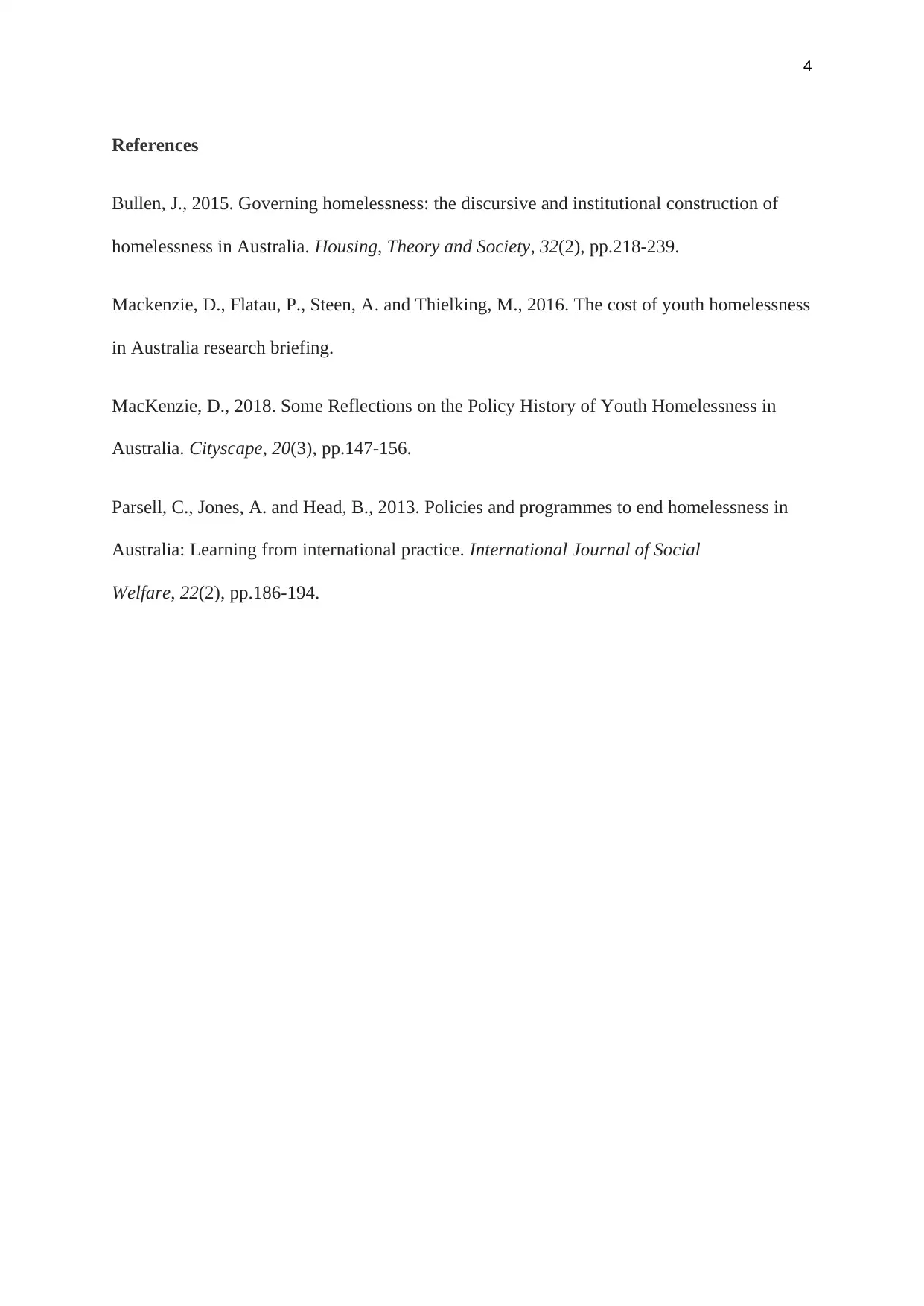Homelessness and Government Accountability: An Australian Case Study
VerifiedAdded on 2022/09/28
|4
|705
|20
Essay
AI Summary
This essay delves into the complex issue of homelessness, framing it as a political problem with a focus on the Australian context. It begins by defining crime and highlighting the argument that the government should be held accountable for the rise in homelessness due to cuts in welfare programs and lack of affordable housing. The essay then explores the potential of criminalizing homelessness as a way to compel the government to address the issue more effectively, arguing that it would force the government to prioritize housing and social welfare. The author supports their views by mentioning that increased housing and welfare services, with the government held accountable, would reduce the number of homeless people. The essay references several academic sources to support its arguments, providing a comprehensive analysis of the political dimensions of homelessness and the responsibilities of the government.
1 out of 4








![[object Object]](/_next/static/media/star-bottom.7253800d.svg)